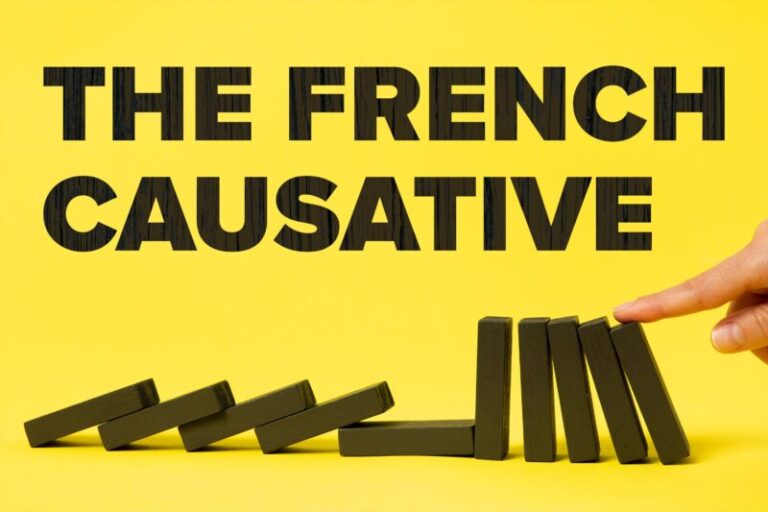Contents
- 1. Le point (Period) — .
- 2. La virgule (Comma) — ,
- 3. Le trait-d’union (Hyphen) — –
- 4. L’apostrophe (Apostrophe) — ‘
- 5. Le deux-points (Colon) — :
- 6. Le point-virgule (Semicolon) — ;
- 7. Les points de suspension (Ellipsis) — …
- 8. Le point d’exclamation (Exclamation Point) — !
- 9. Le point d’interrogation (Question Mark) — ?
- 10. Le signe du pourcentage (Percent Sign) — %
- 11. Le signe dièse (Number Sign) — #
- 12. Le symbole de l’euro / Le symbole du dollar (Euro Sign / Dollar Sign) — € / $
- 13. Les guillemets (Quotation Marks) — « »
- 14. Les parenthèses (Parentheses) — ( )
- Tips for Using French Punctuation
- And one more thing...
14 French Punctuation Marks and How to Use Them
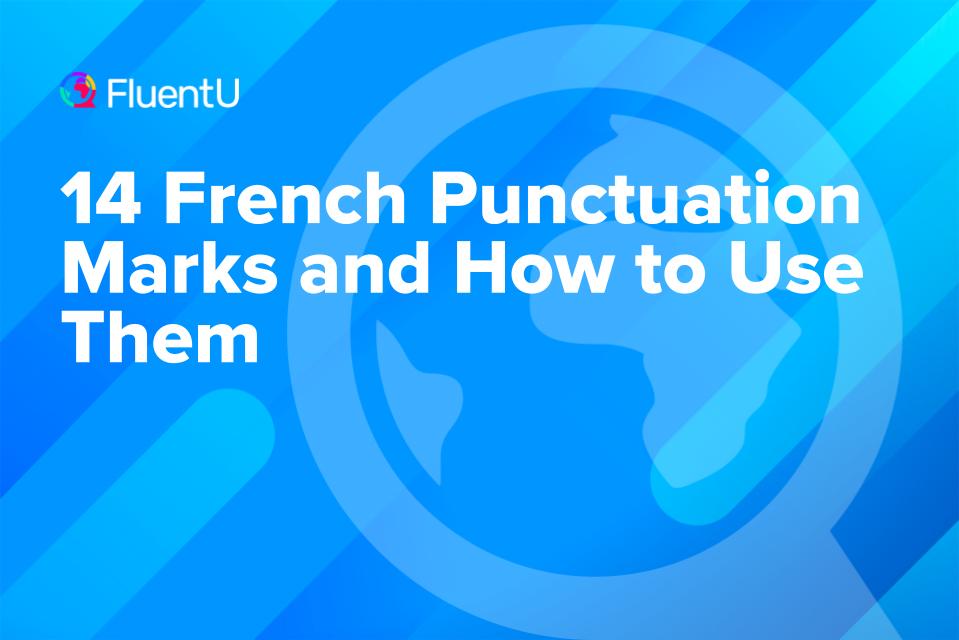
Whether you’re putting together a CV, writing an essay or drafting an email in French, you’ll get the best results if you use proper punctuation. Just as in English, la ponctuation in French is a fundamental skill for literacy.
And although French and English do use a lot of the same punctuation, there are some noteworthy differences that you’ll need to pay attention to. Learning French punctuation will have you on the road to successful French writing in no time at all.
Download: This blog post is available as a convenient and portable PDF that you can take anywhere. Click here to get a copy. (Download)
| Punctuation | French | English |
|---|---|---|
| . | Le point | Period |
| , | La virgule | Comma |
| - | Le trait-d'union | Hyphen |
| ' | L'apostrophe | Apostrophe |
| : | Le deux-points | Colon |
| ; | Le point-virgule | Semicolon |
| ... | Les points de suspension | Ellipsis |
| ! | Le point d'exclamation | Exclamation point |
| ? | Le point d'interrogation | Question mark |
| % | Le signe du pourcentage | Percent sign |
| # | Le signe dièse | Number sign, pound sign |
| € / $ | Le symbole de l'euro / Le symbole du dollar | Euro sign / Dollar sign |
| « » | Les guillemets (m.) | Quotation marks |
| ( ) | Les parenthèses (f.) | Parentheses |
(Note: Les guillemets is masculine and les parentheses is feminine.)
1. Le point (Period) — .
Just like in English, the French period is used at the end of simple statements.
Il fait beau aujourd’hui. (The weather is good today.)
The period can also be used to write out dates.
25.7.2004 (July 25, 2004)
2. La virgule (Comma) — ,
French commas are often used to denote clauses within a sentence, especially adverbial clauses.
Quand il pleut, je reste à la maison. (When it rains, I stay at home.)
They’re also used to separate items in a list.
Je veux acheter des pommes, des oranges et des bananes. (I want to buy apples, oranges and bananas.)
3. Le trait-d’union (Hyphen) — –
Hyphens are used to join compound words together in French.
Ouah ! Regardez cet arc-en-ciel. (Wow! Look at that rainbow.)
French also uses hyphens often in inversion questions.
Avez-vous vu mes clés ? (Have you seen my keys?)
4. L’apostrophe (Apostrophe) — ‘
Most often, the French apostrophe is used in contractions to indicate where a vowel has been dropped.
Je ne sais pas où est l’école. (I don’t know where the school is.)
5. Le deux-points (Colon) — :
French uses the colon significantly more often than English does. It can introduce a list or explanation.
Le résultat est clair : nous avons échoué. (The result is clear: we have failed.)
A colon is also used to introduce quotations or direct speech.
Il a dit : « Qu’est-ce que tu fais ? » (He said, “What are you doing?”)
6. Le point-virgule (Semicolon) — ;
The semicolon is used much the same in French as it is in English. It can connect closely related independent clauses.
J’ai un gros test demain ; je dois étudier ce soir. (I have a big test tomorrow; I need to study tonight.)
It can also separate elements in a list that already contains commas.
Les invités sont : Marie, sa sœur ; Pierre, son frère ; et Lucie, sa cousine. (The guests are: Marie, her sister; Pierre, her brother; and Lucie, her cousin.)
7. Les points de suspension (Ellipsis) — …
The French ellipsis can indicate a pause, an omission, a trailing off or even an interruption.
Je ne sais pas… peut-être demain. (I don’t know… maybe tomorrow.)
8. Le point d’exclamation (Exclamation Point) — !
In French and English, exclamation points denote strong emotions (such as anger, surprise and excitement) or even commands.
Quelle belle journée ! (What a beautiful day!)
9. Le point d’interrogation (Question Mark) — ?
Again the same as English, the French question mark is used at the end of direct questions.
Est-ce que tu aimes le chocolat ? (Do you like chocolate?)
10. Le signe du pourcentage (Percent Sign) — %
As you’d expect, the percent sign is used for percentages in French just as it is in English.
Cette robe est en promotion à 30 % de réduction. (This dress is on sale for a 30% discount.)
11. Le signe dièse (Number Sign) — #
Number signs in French can precede numbers, but you will see them often in social media hashtags as well.
Vous êtes le participant # 7 dans le concours. (You are participant #7 in the contest.)
12. Le symbole de l’euro / Le symbole du dollar (Euro Sign / Dollar Sign) — € / $
As expected, money signs are used for currency amounts and information. In French, the currency symbol appears after the number.
Le livre coûte 15 €. (The book costs €15.)
13. Les guillemets (Quotation Marks) — « »
The French quotation marks are used for indicating direct speech and direct quotes.
Dit-elle : « Je viens demain ». (She said, “I’m coming tomorrow.”)
They are also used when writing the titles of books, songs and other works of art.
J’ai lu « Le Petit Prince » la semaine dernière. (I read “The Little Prince” last week.)
Guillemets can be used to indicate irony or emphasize a certain word or phrase as well.
Ce « repas » était vraiment décevant. (This “meal” was really disappointing.)
14. Les parenthèses (Parentheses) — ( )
Like in English, parentheses are used for adding additional information to something mentioned in the sentence.
Marie a décidé de partir en vacances (en Italie) cet été. (Marie decided to go on vacation (to Italy) this summer.)
Tips for Using French Punctuation
Make sure you understand les guillemets
While English typically uses either the double or the single apostrophe to mark a quotation, French uses guillemets. These angled brackets indicate quotes or speech within a text.
For example, in the story “Bel-Ami” by Guy de Maupassant, the author presents the following dialogue:
« Ah ! mon vieux ! comment vas-tu ?
– Très bien et toi ?
– Oh ! moi, pas trop ; figure-toi que j’ai une poitrine de papier mâché maintenant ; je tousse six mois sur douze, à la suite d’une bronchite que j’ai attrapée à Bougival, l’année de mon retour à Paris, voici quatre ans maintenant.
– Tiens ! tu as l’air solide, pourtant. »
(“Ah! My old man! How are you?”
“Very well, and you?”
“Oh! I’m not very good. Imagine that I have a chest made from papier mâché now; I cough six months out of twelve after having caught bronchitis at Bougival, the year after I returned to Paris four years ago now.”
“Wow! Still, you look solid.”)
The guillemets enclose the entire conversation rather than each individual character’s speech. Different speakers are indicated with a short dash.
In French texts with dialogue, you might actually find many variations on the guillemet, italics and indentation. Find a few different French books to compare to help you fully grasp the various options for using these marks.
The important thing when you’re writing is simply to pick a method of quotation and stick to it throughout the entirety of the text.
Quotations from third parties, however, will appear with the guillemets at either end of the complete statement, indicating when the source text has finished. The more French texts you read, the easier it will be to remember how to use guillemets correctly!
Learn the spacing rules for two-part marks
If you paid careful attention to the example sentences above or if you’ve ever received a French text message, you may have noticed that something looked a little different.
While English leaves no space between punctuation marks and words, certain French marks require a space both before and after them. Learning this spacing is important for writing in French correctly.
Two-part punctuation marks are exactly what they sound like: They’re made up of two or more parts. They tend to be used less frequently than their single counterparts (like periods and commas).
Two-part French punctuation marks include:
: (the colon)
; (the semicolon)
? (the question mark)
! (the exclamation mark)
% (the percentage mark)
$ (money symbols)
# (the number symbol)
« (the guillemet)
If you’re writing on a French device, it will likely already be programmed to put in the spacing required for each punctuation mark. (Do note, however, that when the number sign is used on social media as a hashtag, the preceding space must be omitted.)
When using English-language devices or writing French by hand, make sure you use the proper spacing for each punctuation mark, especially if you’re writing formal or official documents; grammar and accuracy are very important!
Write decimals and large numbers the French way
It’s not unusual for an English speaker to come across a list of numbers written in French and scratch their head in confusion.
In English, decimal points are communicated by the presence of a period in between the numbers. In French, a comma is used instead. For example, look at the same number written in both languages:
- English: 1.5 (one point five)
- French: 1,5 (un virgule cinq)
Larger numbers also use different punctuation than you might be used to. Where English uses commas to separate larger numbers into thousands and so on, French uses spaces or periods. Take a look at the number “three thousand, three hundred”:
- English: 3,300
- French: 3 300 / 3.300
Practice using punctuation in different situations
Here are a few different ways you can test and strengthen your knowledge of French punctuation:
- Translate an English text into French. A section from a novel would work best, since novels contain a wide variety of punctuation. Try a passage that includes both speech and narrative. Check your translation alongside the official French book, if available.
- Focus on a new punctuation each week during writing practice. This will give you the chance to learn each mark thoroughly. Remember to pay attention to the correct spacing for each punctuation.
- Write letters entirely in French. Practice your punctuation skills and connect with your French-speaking friends at the same time. If you don’t have anyone to write to, imagine you have a French pen pal. Try to concoct stories that use as many marks as possible.
- Compose emails, texts or posts in French. Chat with your French friends and classmates online. Keeping your device in its English language setting will help you really test your knowledge—no autocorrect hints! Jumping into digital French forums can give you plenty of practice, too.
Remember: If you’re struggling to get the hang of a particular punctuation, look for it in authentic French materials like books, newspapers or even subtitles. For example, FluentU uses real French videos with expert-vetted captions to help you learn the language.
FluentU takes authentic videos—like music videos, movie trailers, news and inspiring talks—and turns them into personalized language learning lessons.
You can try FluentU for free for 2 weeks. Check out the website or download the iOS app or Android app.
P.S. Click here to take advantage of our current sale! (Expires at the end of this month.)
Although some French punctuation marks might show up a little differently than in English, learning how to use them is just a matter of practice.
And once you learn French punctuation by heart, you’ll be writing like a native!
Download: This blog post is available as a convenient and portable PDF that you can take anywhere. Click here to get a copy. (Download)
And one more thing...
If you like learning French on your own time and from the comfort of your smart device, then I'd be remiss to not tell you about FluentU.
FluentU has a wide variety of great content, like interviews, documentary excerpts and web series, as you can see here:
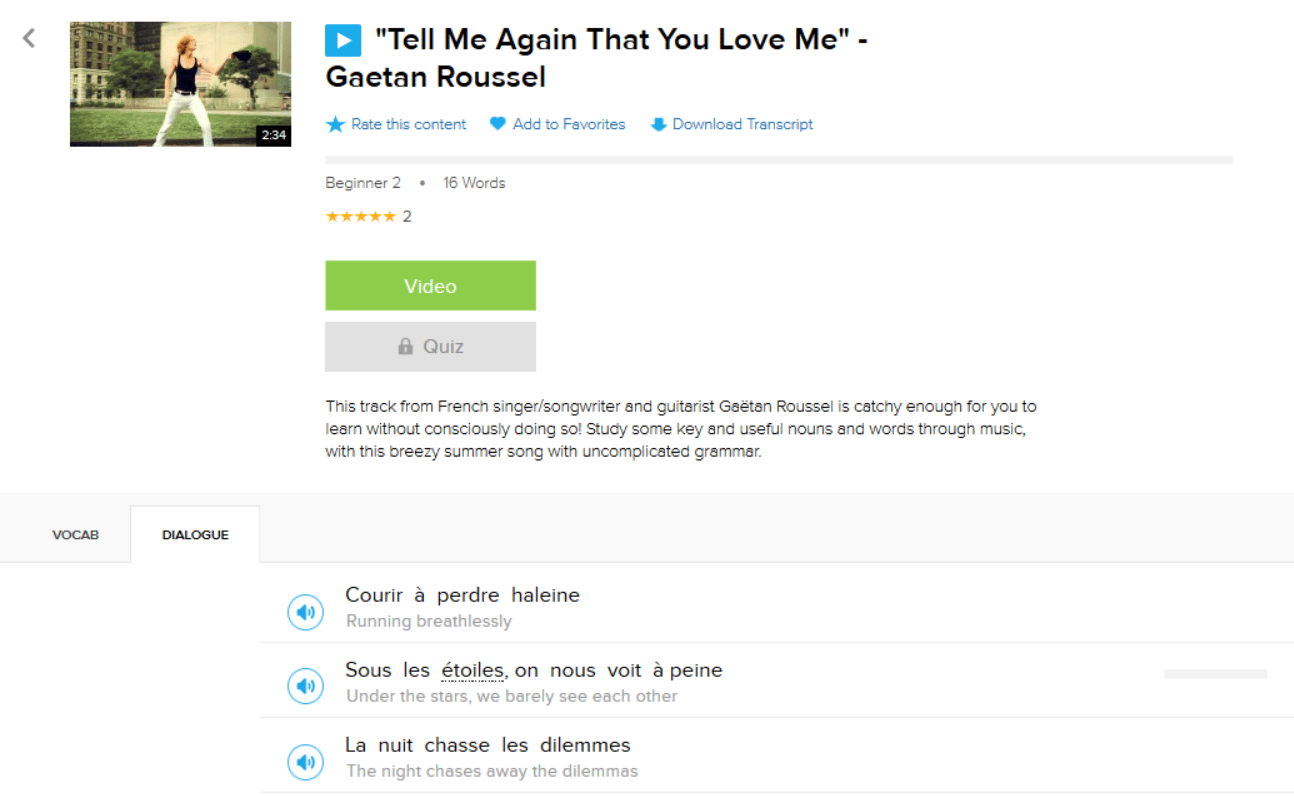
FluentU brings native French videos with reach. With interactive captions, you can tap on any word to see an image, definition and useful examples.
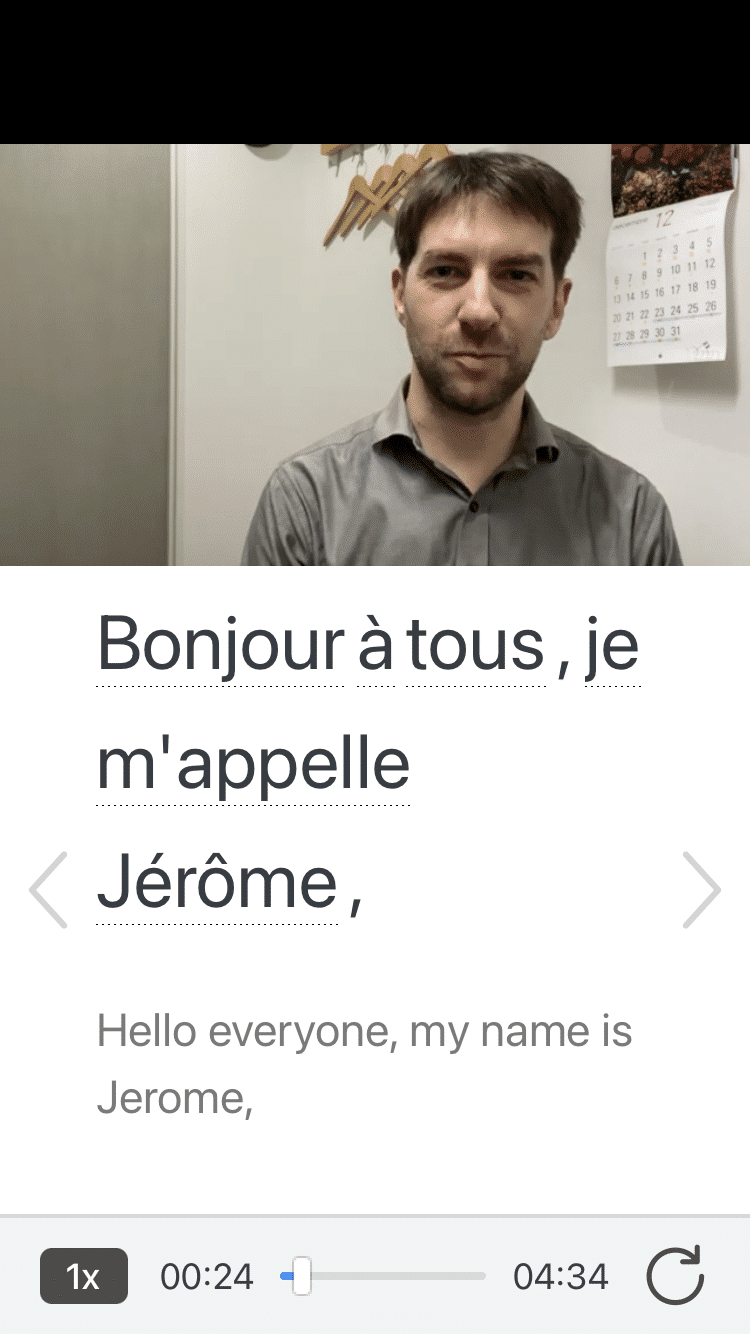
For example, if you tap on the word "crois," you'll see this:
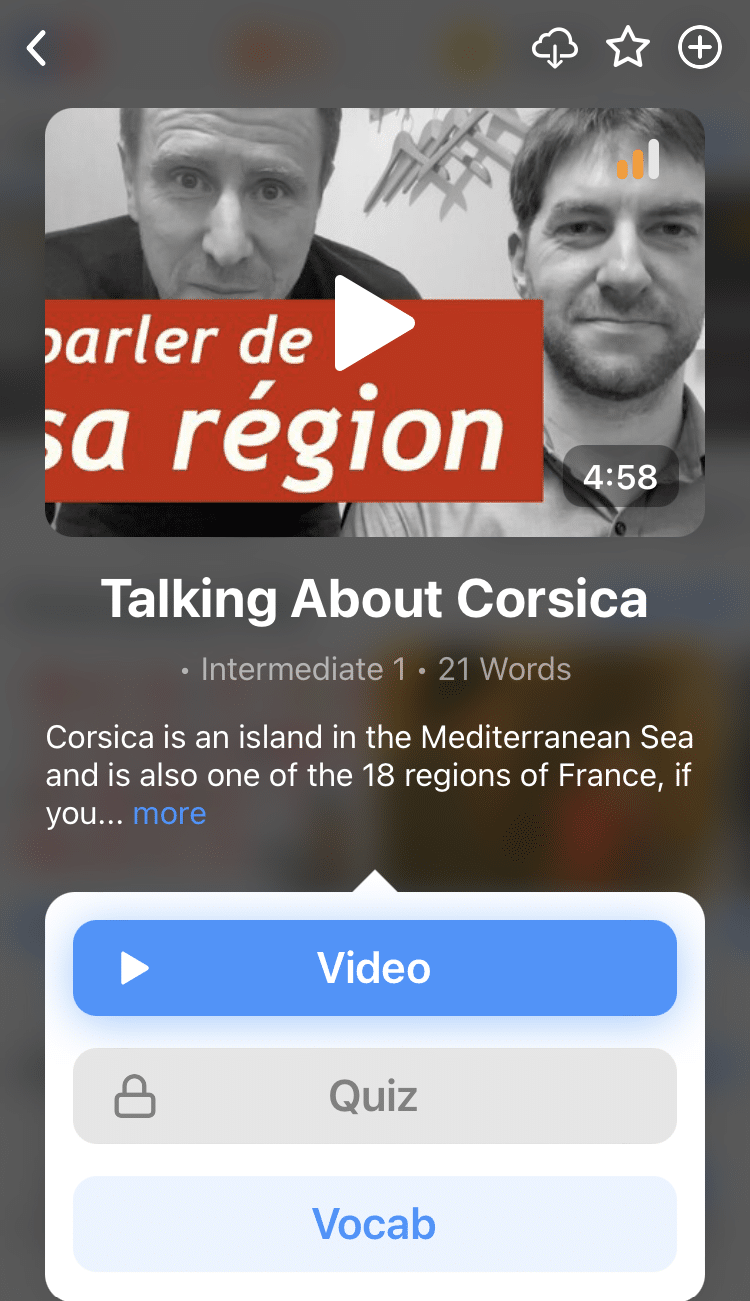
Practice and reinforce all the vocabulary you've learned in a given video with learn mode. Swipe left or right to see more examples for the word you’re learning, and play the mini-games found in our dynamic flashcards, like "fill in the blank."

All throughout, FluentU tracks the vocabulary that you’re learning and uses this information to give you a totally personalized experience. It gives you extra practice with difficult words—and reminds you when it’s time to review what you’ve learned.
Start using the FluentU website on your computer or tablet or, better yet, download the FluentU app from the iTunes or Google Play store. Click here to take advantage of our current sale! (Expires at the end of this month.)


